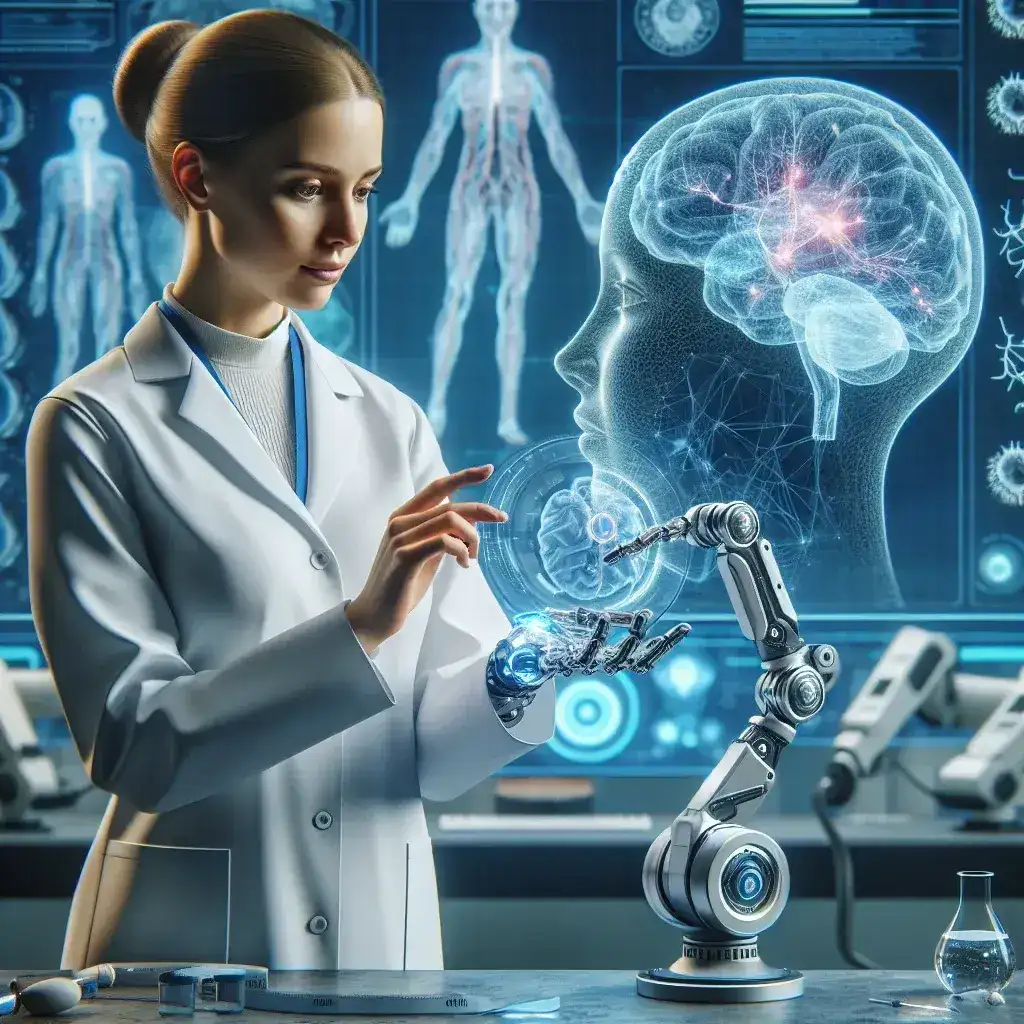
AI Driven Neural Prosthetics Enabling Direct Control of External Robotic Limbs
Introduction
The world of prosthetics is rapidly evolving, driven by advancements in artificial intelligence (AI) and neural technology. AI driven neural prosthetics represent a significant leap forward, enabling individuals to control external robotic limbs with remarkable precision and ease. This article delves into the intricate world of neural prosthetics, exploring their historical context, current advancements, future predictions, and the profound impact they are having on the lives of many.
Historical Context of Prosthetics
The concept of prosthetics can be traced back thousands of years, with the earliest known prosthetic device being a wooden toe discovered in ancient Egypt. Over the centuries, prosthetics have evolved from rudimentary wooden limbs to advanced mechanical devices. However, the integration of AI and neural technology marks a transformative era in this field.
Early Developments
In the early 20th century, prosthetics saw significant improvements with the introduction of materials like aluminum and lightweight plastics. The 1970s and 1980s brought about microprocessors and electronic components, allowing for more dynamic and responsive devices. Yet, it wasn’t until the 21st century that the fusion of AI and neural engineering began to reshape the landscape.
The Advent of Neural Prosthetics
Neural prosthetics, often referred to as brain-computer interfaces (BCIs), allow for direct communication between the brain and external devices. This breakthrough has been made possible by innovations in neuroscience and AI, providing a bridge between human intention and robotic movement.
The Technology Behind AI Driven Neural Prosthetics
At the heart of AI driven neural prosthetics is a sophisticated system that interprets neural signals from the brain. These systems typically consist of three main components:
- Neural Sensors: These devices are implanted in the brain or placed on the scalp, capturing electrical signals generated by neurons.
- Signal Processing Algorithms: AI algorithms analyze and decode the neural signals, translating them into actionable commands for robotic limbs.
- Robotic Limbs: These are the external devices that respond to the processed signals, allowing users to perform movements such as grasping or walking.
How It Works
The process begins when a user thinks about a movement, such as lifting an arm. The neural sensors detect the associated brain activity, sending this data to the AI algorithms. These algorithms interpret the signals and send a command to the robotic limb, which then executes the desired movement. This seamless integration creates a natural and intuitive user experience.
Advantages of AI Driven Neural Prosthetics
AI driven neural prosthetics offer numerous advantages over traditional prosthetic devices:
- Enhanced Control: Users can control their robotic limbs with thoughts, allowing for fluid and precise movements.
- Improved Quality of Life: These devices enable individuals to perform daily activities independently, fostering a sense of normalcy.
- Adaptive Learning: AI algorithms can learn from user behavior, adapting to improve performance over time.
- Reduced Cognitive Load: By eliminating the need for manual controls, these prosthetics reduce the mental effort required to operate them.
Real-World Applications
The applications of AI driven neural prosthetics are vast and varied. They are particularly beneficial for individuals with amputations, spinal cord injuries, or neurological disorders such as ALS. For instance:
- Ampitients can regain the ability to perform everyday tasks, such as eating or writing, with prosthetic hands that mimic natural movements.
- Individuals with spinal cord injuries can utilize robotic legs to stand and walk, enhancing mobility and independence.
- Patients with neurological disorders can communicate through brain-controlled devices, allowing them to interact with their environment.
The Future of Neural Prosthetics
As research in AI and neuroscience progresses, the future of neural prosthetics looks promising. Experts predict several key trends:
Miniaturization and Wearability
Future devices are expected to become smaller, lighter, and more discreet, enhancing user comfort and aesthetics. Innovations in materials science will play a pivotal role in achieving this.
Increased Integration with AI
As AI continues to advance, neural prosthetics will become more sophisticated, offering greater levels of control and adaptability. Enhanced machine learning capabilities will allow these devices to predict user intentions with greater accuracy.
Broader Accessibility
Efforts are underway to make these technologies more accessible, ensuring that individuals from diverse backgrounds can benefit from AI driven neural prosthetics. This includes reducing costs and improving healthcare infrastructure.
Challenges and Considerations
Despite their potential, AI driven neural prosthetics face several challenges:
- Ethical Concerns: The integration of AI in healthcare raises ethical questions about privacy, consent, and the implications of altering human capabilities.
- Technical Limitations: Current technology is not without limitations, including issues related to signal fidelity and device reliability.
- Regulatory Hurdles: Navigating the regulatory landscape for medical devices can be complex and time-consuming, delaying the introduction of new technologies.
Expert Insights
Experts in the field emphasize the importance of a multidisciplinary approach to address these challenges. Collaboration between engineers, neuroscientists, ethicists, and healthcare professionals is crucial to ensure the safe and effective development of AI driven neural prosthetics.
Cultural Relevance and Acceptance
The cultural acceptance of AI driven prosthetics is vital for their successful integration into society. Public perception plays a significant role in how these technologies are adopted. Raising awareness and fostering understanding will help mitigate fears and misconceptions surrounding AI and human augmentation.
Conclusion
AI driven neural prosthetics are reshaping the landscape of rehabilitation and mobility for individuals with disabilities. With their ability to enable direct control of external robotic limbs, they offer a glimpse into a future where technology and humanity coexist in harmony. As research continues and technology evolves, the potential for these devices is limitless, promising enhanced independence and quality of life for countless individuals. The journey is just beginning, and the world eagerly awaits the developments that lie ahead.




Leave a Comment